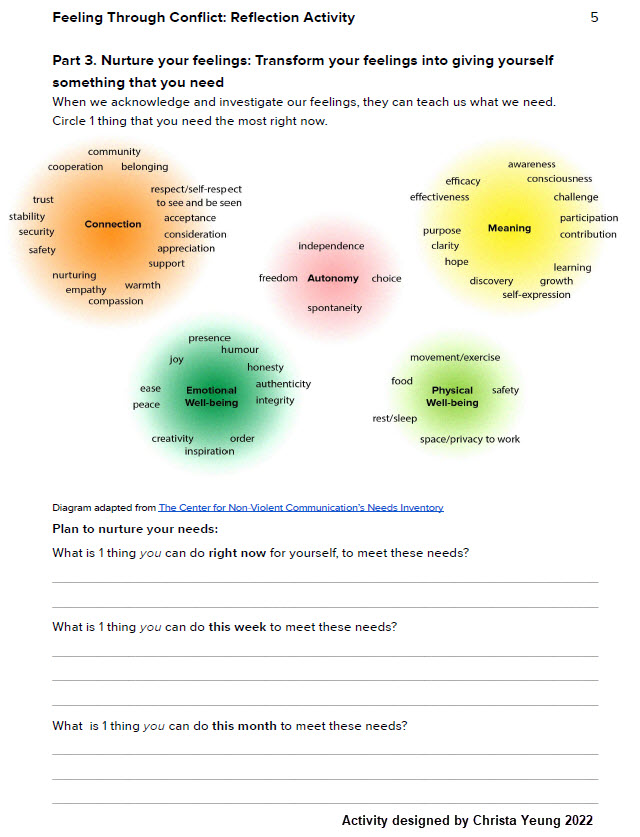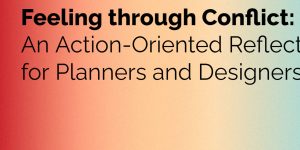Planning and urban design in the 21st century continues to grapple with its role, and powers in projects of colonialism and racism. What then, is a planner's role in deconstructing interlocking systems of oppression? And what ideas and tools can be mobilized to advance community power for liberatory city-making?
These questions and goals lie at the heart of my second year Master of Science in Planning course "Design and Planning for Community Power" – and served as inspirations for my final project. For this project, I was tasked to extend a theme explored in our course, in my case: transformative justice, and facilitate a mini-workshop to engage our class of about 20 students. I chose to design a guided reflection exercise and worksheet.
Whether a planner/designer is urging their colleagues to embed land acknowledgements in their work, or involve a historically excluded community group in a project's process — planners, designers, and architects face many ethical dilemmas and interpersonal challenges on the path toward anti-oppressive goals.
The "Feeling Through Conflict" activity aims to transform these moments and emotions of conflict into digestible actions.
1. Who is the target audience of this activity?
- Planners/Urban Designers/Architects who want to do transformative and anti-oppressive work but are encountering ethical dilemmas and challenging interpersonal conflict in their practice.
2. What challenges is the target audience experiencing?
- Frustration by interpersonal conflict and the slow speed of progress to achieving transformative goals.
- Burn out from the limitations within their work to meaningfully take anti-oppressive action.
- These planners & designers are looking for ways to process difficult emotions that arise from conflict. They want to reduce personal harm and pursue transformative work sustainably in the long run.
“How do we shift into a culture in which conflict and difference is generative?” (p.81)
- “Resilience: How we recover and transform” in adrienne maree brown's Emergent Strategy (2017)

3. What opportunities are unlocked through the activity?
“Transformative justice… asks us to consider how to transform toxic energy, hurt, legitimate pain, and conflict into solutions. To get under the wrong, find a way to coexist, be energy moving towards life, together.” (p.82)
- adrienne maree brown, Emergent Strategy (2017)
- Conflict triggers strong emotions within us - these emotions are vital data about our values and personal histories that can be harnessed.
- "Feeling Through Conflict" guides planners and designers to acknowledge and examine these feelings with kindness and compassion. Rather than suppressing or ruminating in them, which could lead to burn out and harm down the road.
- After examining these feelings, planners and designers are invited to set concrete, achievable actions to nurture needs that arise from conflict. And feel prepared to confront the source of conflict.
- All planners and designers are humans with feelings. Acknowledging and identifying feelings can help us build resilience in our practice. Think of it as step 1 in a lifelong journey towards transformative work where bigger conflicts are bound to arise.

Project Inspirations and Resources
This project is inspired by theory and methodologies from wellness, nonviolent communication, and transformative justice.
- RAIN Method of radical compassion from Dr. Tara Brach
- Emotion grid from non-profit, The Well; adapted from Dr. Marc Brackett's book Permission to Feel
- Feelings and Needs Inventory from The Center for Nonviolent Communication
- adrienne marie brown's (2017) Emergent Strategy
I am happy to provide copies of this worksheet to planners and designers of all fields. Please feel free to reach me: yeungchrista@gmail.com!

